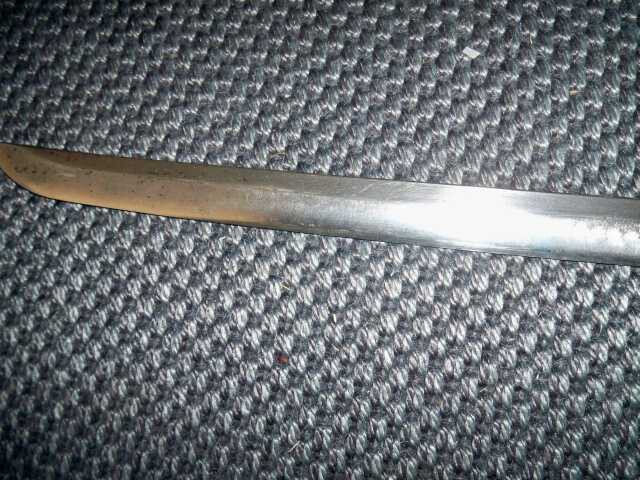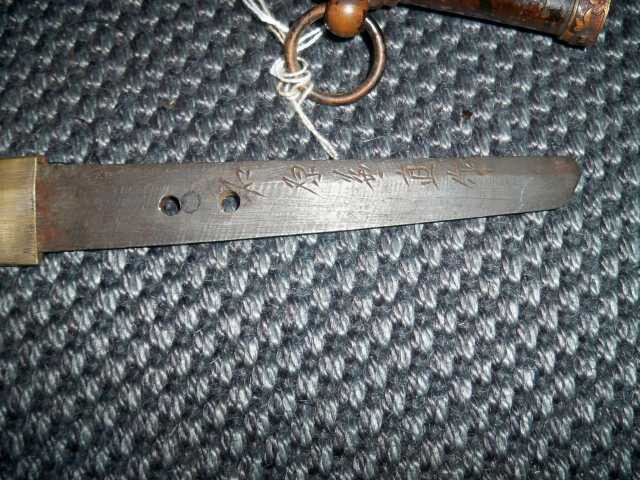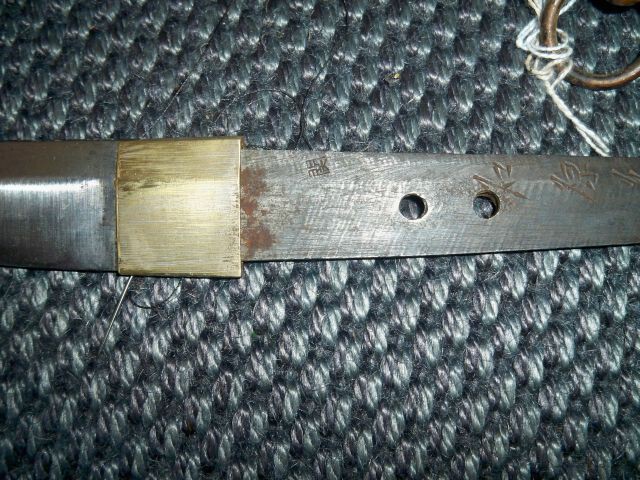-
Posts
2,003 -
Joined
-
Last visited
-
Days Won
6
Content Type
Profiles
Forums
Events
Store
Downloads
Gallery
Posts posted by estcrh
-
-
If you look at the how the items are being described you will see that he is not wording the items in the way that someone who was...working it...would have....the artillery sword he listed did not even have the word...Japanese.... in the description...he mentions vintage over and over and not...antique...anyone here knows that at experienced seller of Japanese antiques would mention the word ..Japan or Japanese and ..antique in their description....and he is not researching the proper names of the items, and the pictures are not what an experienced seller of antiques would use to get the best price. He seems to be someone who is over his head and not experienced in this field. I purchased the item which looked like a hitai-ate on ebay from him, I guess I will find out!
-
"The dôshin either grinded the ha (sharpened edge) off their wakizashi or carried special wakizashi forged with extra-thick dull blades. The short blunted wakizashi were considered more suitable for making arrests, especially within confined spaces. A resisting suspect could easily be stunned and immobilized with a strike from such a blade without risking a potentially lethal injury as with a sharpened sword." .........................This is from Don Cunningham's book Samurai Weapons Tools of the Warrior page 131 in the chapter discussing uchiharai jutte. This is the reference I read about a dull sword being used by samurai police. Has Mr Bottomley or anyone else heard of this type of weapon?
-
I have seen jutte and hachi wari and own examples of both, I am referring to actual swords that were not sharp, I remember reading a reference to samurai police or doshin in a book or article were the author stated that unsharpened swords were used to help capture suspects. I will see if I can find the reference again.I just purchased it, wanted to check it out, should be good for Mardi Gras though! I have heard the samurai police used blunt swords to capture suspects also, has anyone else heard this or seen one?You may be referring to jutte (or jitte), a defensive weapon used by the Edo period police, the so called doshin (consisting of samurai, of course). Jutte was by no means a sword. Google "hachiwari" and "jutte" to get more info.
-
I just purchased it, wanted to check it out, should be good for Mardi Gras though! I have heard the samurai police used blunt swords to capture suspects also, has anyone else heard this or seen one?
-
Nice items, the first appears to be a yatate, which is a pot for holding ink, I cant see if the handle is hollow for holding a brush or not. The second item is a eating utensil holder, I have 1 which holds chop sticks and a knife, I have seen a few for sale but I do not know the Japanese name, I cant see what yours holds exactly but it looks interesting, I see a black lacquered water dipper or bashaku in the picture. The spike thing in the box....cant see to well but it may be a type of shuriken which a small throwing weapon. If you can post some more pics of everything with different angles that would be great. The items appear to be Edo period to me but better pics would help, there are better judges of that here than me though.
-
"If the question concerns the authenticity of the signature, then the answer is "Who knows?" Unless you witness the sword being made and the signature inscribed, no one can tell with absolute certainty that the signature is genuine. But, fortunately, there are people who spend years studying swords, and they offer their opinions in the form of kanteisho (evaluation paper). In the absence of such a paper, it would be safe to assume that every signature is false. Experts suggest that more than 80% of the signatures are not genuine, and the percentage gets higher on famous and popular swordsmiths. The lack of kanteiso or having a gimei (false signature), however, does not mean that the sword is worthless. Far from it. False signatures are often added years, if not centuries after the blade was made, and that is no fault of the original swordsmith. If you appreciate the blade for itself, then the signature should not matter, in my opinion. If, on the other hand, you are buying the "name" and not the blade, then you should be prepared to pay dearly for it. Having a kanteisho does not necessarily guarantee that the signature is genuine. Some kanteisho are issued by questionable organizations, and reputable organizations too are known to have issued some questionable papers in the past. So what is one to do? Unless you have trained eyes and the confidence in your ability to judge blades, it would be safe to shop only for a swod that "speaks" to you and is within the price range that you can justify to yourself". >>>>>This is what the seller of this sword has to say about signatures on the swords he sells....in his own words. This statement is true for just about any signature on any antique (and most newer ones also) Japanese item as far as I can see, if you like the item and can afford it and it it did not have that particular signature would you still buy it? I believe if the item you buy is actually authentic and as old as you believe it is you are doing pretty good!
-
Do you mean the sites that bid on Japanese auctions for you?
-
Is it possible that it is a jutte that was turned into a tobikuchi?..that could explain some things, the ring and axe head could have been added to an existing jutte. Edo period recycling.
-
This item looks like some kind of firemans tool, what looks like a hook could be some kind of hand guard, the wrap is very high up indicating that someone would have gripped this tool with 1 hand near the head......here are some other types of such tools http://s831.photobucket.com/albums/zz23 ... s%20tools/
-
Thanks for the help, so from what I have read, a seki stamp means that this sword is not a traditional blade due to the type of steel used to make it, but it can still be hand made in the traditional method? I am trying to find out if this sword which has not been treated to well is worth putting any work into.
-
Thanks, I get a little confused as to the stamps, can anyone here enlighten me as to what this stamp might signify?
-






A Puzzling Item.
in Nihonto
Posted